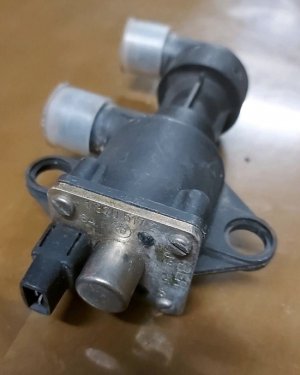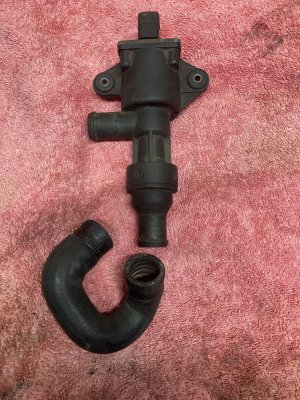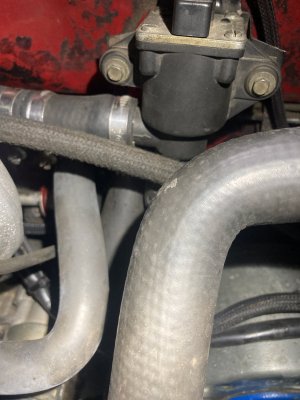This valve simply cuts off the flow of coolant that emerges from the back of the head and prevents the hot coolant from flowing into the heater core.
There is the belief by some that interrupting the flow in that manner would somehow overheat the back of the head. I don't believe so.
As the coolant flows from the pump into the block it flows upward into head through many (12?) cavities that surround each cylinder. The outlet in the back of the head diverts some of this heated coolant to the heater core and the intake manifolds to improve cold running. Blocking the flow to the heater and manifolds does nothing to impede the fast and furious flow of the coolant around the cylinders and head.
In fact, the opposite argument can be made that diverting some coolant out the back of the head slightly diminishes the flow through the head. Just as it would happen if you place a 1 to 2 hose divider in your outdoor home faucet and now each hose has to share the pressure of the water supply, leading to slower flow. I don't believe this is a meaningful reduction in flow or even measurable in the case of the engine but I put it out there to help visualize what is going on.
When it's sufficiently cold that I would want some amount of heat in the car I turn on the valve and that helps warm up the manifolds plus provide me the heat I need in the cabin and easily turn it off later as the day and or the engine have warmed up.
But... I am no fluid dynamics engineer, only an amateur, so take all this with a grain of salt.
Interestingly, BMW provided this type of single hose cutoff as an option for AC cars in the E3 and many (all?) later M30 equipped cars.



